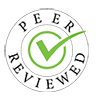Role of Homeopathy in Preventive Healthcare in Rural India
DOI:
https://doi.org/10.36676/jrps.v15.i1.1643Keywords:
Homeopathy, Preventive Healthcare, Rural Health India, Alternative Medicine, AYUSH Integration, Primary Health Services, Community Health Programs, Traditional Medicine in India, Holistic HealthcareAbstract
Homeopathy, a system of alternative medicine, is increasingly being acknowledged for its promise in preventative healthcare, particularly in rural India. This article examines the historical context, current integration, problems, and future prospects for homeopathy in rural healthcare settings. The study emphasizes the importance of homeopathy in improving healthcare accessibility and cost in marginalized areas by examining government actions, community acceptability, and educational frameworks.
References
Aminabhavi, T. M. (2014, March 5). Homeopathy -- India's traditional system of medicine. Nikkei Asia. Retrieved September 16, 2022, from https://asia.nikkei.com/Business/Biotechnology/Homeopathy-India-s-traditional-system-of-medicine Balint, M. (1957). The doctor, his patient and the illness. International Universities Press.
Braun, V., & Clarke, V. (2006). Using Thematic Analysis in Psychology. Qualitative Research in Psychology, 3(2), 77–101. https://doi.org/10.1191/1478088706qp063oa Brierley-Jones L. (2021). Talking therapy: The allopathic nihilation of homoeopathy through conceptual translation and a new medical language. History of the human sciences, 34(3-4), 121–141. https://doi.org/10.1177/0952695120967872 Brock C. (2013). Risk, responsibility and surgery in the 1890s and early 1900s. Medical history, 57(3), 317–337. https://doi.org/10.1017/mdh.2013.16 DOI: https://doi.org/10.1017/mdh.2013.16
Burns, K. E. A., & Kho, M. E. (2015). How to assess a survey report: a guide for readers and peer reviewers. Canadian Medical Association Journal, 187(6), E198–E205. https://doi.org/10.1503/cmaj.140545 DOI: https://doi.org/10.1503/cmaj.140545
Dutta, A. (2023). Unveiling the Patient Tapestry: Harnessing the Importance of Patient Perspectives in Advancing Homeopathy Research. Homeopathy. https://doi.org/10.1055/s-0043-1775995 DOI: https://doi.org/10.1055/s-0043-1775995
Clarke, T. C., Stussman, B. J., Barnes, P. M., & Nahin, R. L. (2015). Trends in the use of complementary health approaches among adults: United States, 2002–2012. National Health Statistics Reports, (79). https://doi.org/https://www.cdc.gov/nchs/data/nhsr/nhsr079.pdf
MOTIVATIONS BEHIND THE RISE AND SUCCESS OF HOMEOPATHY 40
Cukaci, C., Freissmuth, M., Mann, C., Marti, J., & Sperl, V. (2020). Against all odds-the persistent popularity of homeopathy. Wiener klinische Wochenschrift, 132(9-10), 232–242. https://doi.org/10.1007/s00508-020-01624-x DOI: https://doi.org/10.1007/s00508-020-01624-x
Das, B. (2021). History of Development of Homoeopathy in India. Bulletin of the Indian Institute of History of Medicine, 50, 89–90. Dossett, M. L., & Yeh, G. Y. (2018). Homeopathy Use in the United States and Implications for Public Health: A Review. Homeopathy : the journal of the Faculty of Homeopathy, 107(1), 3–9. https://doi.org/10.1055/s-0037-1609016 DOI: https://doi.org/10.1055/s-0037-1609016
Downloads
Published
How to Cite
Issue
Section
License
Copyright (c) 2024 International Journal for Research Publication and Seminar

This work is licensed under a Creative Commons Attribution 4.0 International License.
Re-users must give appropriate credit, provide a link to the license, and indicate if changes were made. You may do so in any reasonable manner, but not in any way that suggests the licensor endorses you or your use. This license allows for redistribution, commercial and non-commercial, as long as the original work is properly credited.






